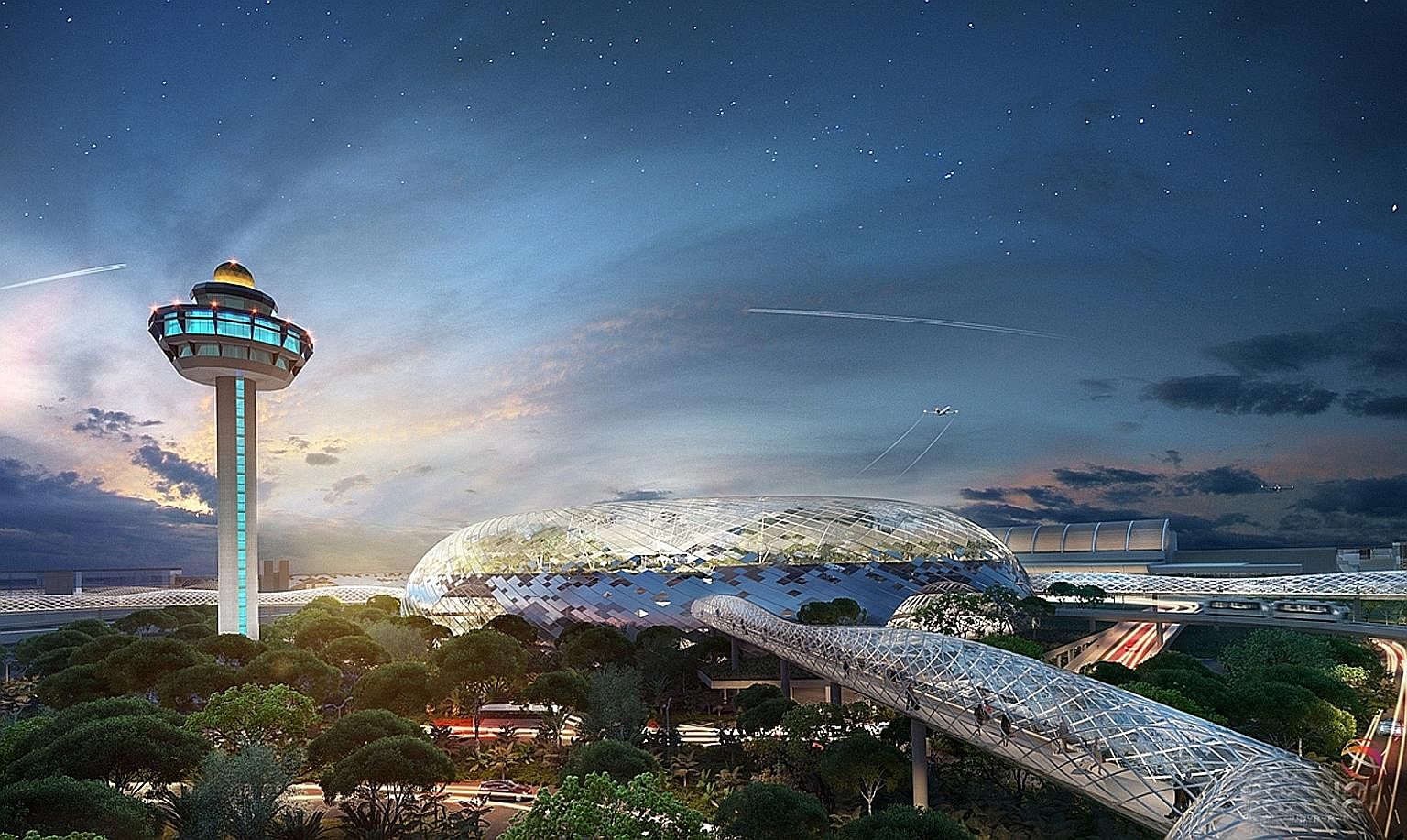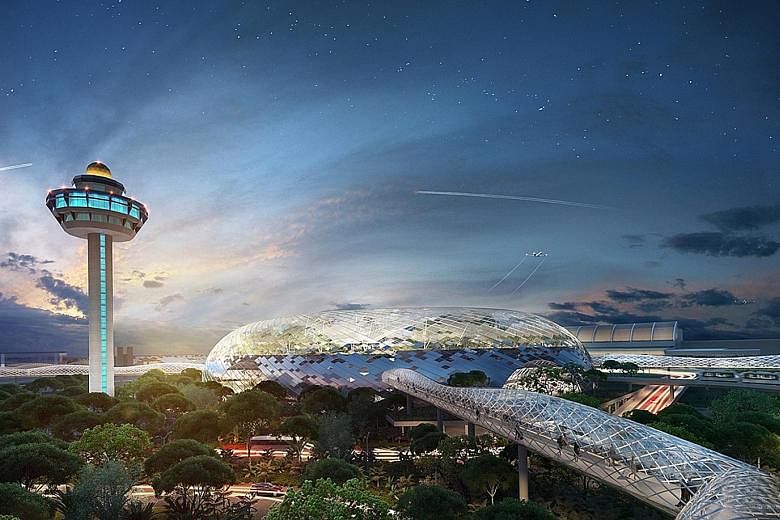Plans are afoot to erect Changi Airport's biggest passenger terminal, even as key questions remain unanswered.
Who will pay for the Terminal 5 (T5) project? Who will run the mega facility? Will passengers and airlines pay the same charges across all terminals?
T5 is the biggest expansion project since Changi Airport opened in 1981.
It could cost tens of billions, prompting a government rethink of how the airport should be owned and run. The Ministry of Transport has called for consultants to study the issue.
The existing three terminals, built and paid for by the Government, are now run by Changi Airport Group (CAG), a corporate entity set up in 2009.
The same model might not work for T5, which is separated from the current airport by Changi Coast Road and is slated to open in phases by the end of the next decade.

From 66 million passengers a year now, which is the total number of passengers the current three terminals can handle in a year, Changi Airport will be able to handle 82 million by the time T4 opens next year.
When T5 is ready, total capacity will increase to 135 million passengers a year.
The Government has said it will co-fund the T5 project, but by how much? The Government faces increased pressure in social spending on healthcare, for the elderly and on workers' retraining.
Given the importance of aviation, it can be expected to stump out a large amount.
Senior Minister of State for Transport Josephine Teo, who spoke about this last year, pointed out that for the MRT system, the Government funds all the infrastructure and first set of rolling stock, which accounts for about 90 per cent of the total start-up costs.
Will the T5 project be similarly funded? The jury is still out on the best way forward, but experts concur there is merit in some form of private-sector involvement.
Globally, airports appear to be moving towards a public-private ownership model, as governments that funded the first set of infrastructure seek private support to build new terminals and upgrade existing ones.
In Australia, for example, the Federal Airports Corporation was set up in 1987 as a government business enterprise to operate airports on behalf of the Australian government.
A decade later, a decision was made to privatise the airports.
In India, a concession to operate, manage and expand the airport in New Delhi was awarded in 2006 to a private consortium comprising the country's GMR Group with a majority stake and Airports Authority of India, Germany's Fraport and Eraman Malaysia as the other stakeholders.
A similar concession was awarded for the airport in Mumbai, with the team there led by Indian conglomerate GVK.
Closer to home, Malaysia Airports is a public-listed company, as is Airports of Thailand. The latter manages five airports, including Bangkok's Suvarnabhumi.
Government Parliamentary Committee for Transport chairman Sitoh Yih Pin said the big plus for airport privatisation is operational efficiency.
Private companies are profit-driven and are more inclined to cut costs and be more efficient, he said. It makes sense for Singapore to move similarly.
For one thing, it will free up public funds for other pressing needs as society ages, for example.
It will also ensure that Changi Airport continues to run efficiently, which cannot be taken for granted even if the airport has done well so far.
Changi Airport has already embarked on its first tie-up with a private firm.
Project Jewel, which will offer mainly retail services when it opens in 2018, is being developed by an entity 51 per cent owned by CAG and 49 per cent by retail firm CapitaMalls Asia.
A similar partnership could be struck with the private sector, including foreign firms, for the T5 development.
Given the significance of the aviation sector, which accounts for 6 per cent of Singapore's gross domestic product and hires about 55,000 people, the Government would no doubt want to retain majority ownership of the new entity.
This could be done through investment firm Temasek Holdings.
When CAG was set up, the plan was to eventually transfer ownership of the airport and all assets from the Ministry of Finance to Temasek.
But this has not happened, very likely due to uncertainty over how future airport expansion and other projects would be funded.
Once funding and ownership details for T5 are sorted out, the transfer could be effected.
Whatever the ownership structure, it is critical to ensure that Changi Airport does not become purely profit-driven.
An eye on just profits could impact its competitiveness vis-a-vis rival airports if this leads to higher fees and charges for passengers, airlines and other airport users.
Key decisions on fees and charges, air traffic management and other critical matters must not be left entirely to market forces.
Even as private funds are sourced for the T5 project, investors could be assured guaranteed returns without having a say in how the airport is run and managed.
As plans for T5 are being finalised, the other question being asked is whether the new terminal and related facilities, including a new cargo complex, should be operated by CAG or another firm.
Presumably, those who vote for a second operator would argue that this would encourage competition and keep both on their toes.
Maybe, but at what expense?
Changi Airport is at the top today because it is efficient and offers travellers easy and convenient transfers from one terminal to another.
This will in fact be the biggest challenge when T5, which is about 1.6km away from the current airport premises, opens.
Travellers' convenience must not be compromised and this is best achieved with one operator running the entire airport.
Split operations would add to complications and possibly conflict, which is the last thing Changi Airport needs as it competes against neighbouring rivals.
As decisions are made on how T5 is to be funded and operated, the key priority must always be what is best for Singapore's air hub.


